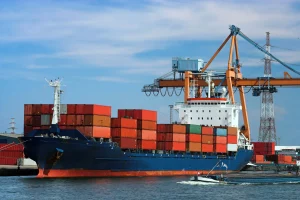Introduction
The aviation industry operates under a stringent regime of safety standards and regulations that are critical for the protection of passengers, crew, and cargo. Among the key players in ensuring the safety and reliability of aircraft are Aircraft Maintenance Service Providers (AMSPs). These entities are essential not only for routine maintenance but also for emergency repairs that can arise at any time. This article explores the vital role of AMSPs in emergency repairs, delving into their processes, challenges, and the technology that enhances their capabilities.
Understanding the Aircraft Maintenance Service Providers (AMSPs)
What Are AMSPs?
Aircraft Maintenance Service Providers (AMSPs) are specialized organizations tasked with maintaining, repairing, and overhauling aircraft. Their activities range from scheduled maintenance checks—typically termed as A, B, C, and D checks—to unscheduled emergency repairs that arise due to unexpected failures or damages. AMSPs ensure compliance with aviation regulations and safety standards, mitigating risks associated with aircraft operations.
The Importance of Emergency Repairs
Emergency repairs are critical to maintaining the operational safety of an aircraft. These repairs address issues that could ground an aircraft or lead to unsafe flight conditions. They often require immediate attention, expertise, and the availability of essential parts or tools.
The Emergency Repair Process
1. Identification of the Issue
The initial step in any emergency repair process is the identification of the problem. Pilots or ground crew members may notice a malfunction or issue during pre-flight inspections, in-flight operations, or post-landing checks. Once a potential issue is identified, it is crucial to assess its severity promptly.
2. Reporting and Documentation
Once an issue is identified, it must be reported to the relevant authorities, including operations control and the AMSP. Proper documentation of the problem is vital, as it ensures that all stakeholders are aware of the situation and can respond accordingly. Detailed records also help in assessing the issue’s impact and determining the necessary course of action.
3. Initial Assessment and Triage
Upon receiving an emergency report, AMSPs conduct an initial assessment of the issue. This involves a thorough triage process to determine the urgency and impact of the repair. If the problem is critical and could endanger safety, the AMSP prioritizes it for immediate action.
4. Allocation of Resources
AMSPs must ensure that the right resources are available for emergency repairs. This includes skilled personnel, specialized tools, and replacement parts. Effective inventory management is crucial, as it allows AMSPs to quickly access the necessary materials without significant delays.
5. Execution of Repairs
With resources allocated, AMSP technicians and engineers begin the repair process. Depending on the issue’s complexity, repairs might be straightforward or require extensive testing and validation before the aircraft can return to service.
6. Final Inspection and Testing
After completing repairs, AMSPs conduct a thorough inspection of the aircraft to ensure all work complies with safety regulations. Testing is also performed to confirm that the repairs have resolved the issue without introducing new problems. This stage is vital, as it safeguards the aircraft’s safety and performance before it resumes operations.
7. Documentation and Compliance
Once repairs are properly completed and validated, AMSPs document all actions taken. This documentation is essential for compliance with aviation regulations and provides a historical account that can be referenced for future maintenance.
8. Return to Service
After all necessary inspections and documentation are completed, the aircraft is cleared to return to service. AMSPs coordinate with airline operators to ensure a smooth transition back into scheduled operations.
Challenges Faced by AMSPs in Emergency Repairs
1. Time Sensitivity
Emergencies demand immediate responses, placing immense pressure on AMSPs to act quickly while ensuring that repairs meet safety and quality standards. Delaying repairs could lead to flight cancellations and financial losses for airlines, making swift action a critical aspect of their operations.
2. Resource Availability
Emergency repairs often require specific parts or tools that might not be readily available at the location. AMSPs must have strategies to source parts quickly, whether through existing inventory or expedited procurement.
3. Technological Complexity
Modern aircraft are equipped with advanced technologies that can complicate repairs. Technicians must be well-trained to diagnose and address issues confidently. Continuous professional development and training are crucial to keep pace with technological advancements.
4. Regulatory Compliance
AMSPs operate under strict federal and international regulations. Ensuring that all emergency repair actions comply with these standards is both a legal and ethical obligation. Non-compliance can result in significant penalties and jeopardize safety.
The Role of Technology in Enhancing Emergency Repairs
1. Predictive Maintenance
Emerging technologies such as predictive maintenance leverage data analytics and IoT (Internet of Things) sensors to identify potential failures before they occur. By monitoring aircraft systems in real time, AMSPs can preemptively address issues, potentially reducing the frequency of necessitated emergency repairs.
2. Mobile Workstations
Mobile technology enables technicians to access crucial information and resources from anywhere. Mobile workstations can connect to aircraft data and maintenance manuals, allowing technicians to diagnose issues and verify repair instructions on the go.
3. Inventory Management Systems
Advanced inventory management solutions help AMSPs monitor stock levels of critical spare parts. Real-time tracking enables quick access to necessary components, significantly speeding up the emergency repair process.
4. Remote Support and Collaboration
Technological advancements allow AMSPs to provide remote support and collaboration, bridging the gap between on-site technicians and experts located elsewhere. Virtual consultations can expedite decision-making processes and enhance repair quality.
The Future of AMSPs in Emergency Repairs
As the aviation industry continues to evolve, the role of AMSPs in emergency repairs is anticipated to become even more critical. With emerging technologies, evolving regulations, and increasing passenger demands for safety and reliability, AMSPs must adapt continually.
Emphasis on Training
As aircraft technologies become more sophisticated, ongoing training for AMSP personnel will be paramount. Continued education in new maintenance practices, technologies, and regulatory updates will ensure that technicians are equipped to handle future challenges effectively.
Integration of AI and Machine Learning
Artificial Intelligence (AI) and machine learning will play significant roles in the future of aviation maintenance. These technologies can improve predictive maintenance capabilities, enhancing AMSPs’ ability to prevent issues before they necessitate emergency repairs.
Greater Focus on Sustainability
With growing environmental concerns, the aviation industry is moving towards sustainable practices. AMSPs will need to adapt to these changes by incorporating eco-friendly materials and practices into their repair processes.
Conclusion
Aircraft Maintenance Service Providers play an indispensable role in ensuring the safety and reliability of aircraft through effective emergency repair processes. Their ability to respond rapidly to unplanned incidents, coupled with a commitment to compliance and quality, is critical for maintaining operational integrity within the aviation industry.
As AMSPs continue to evolve, embracing new technologies and enhancing their capabilities, their contributions will remain a cornerstone of aviation safety. By prioritizing continuous improvement, training, and collaboration, AMSPs will be well-prepared to meet the challenges of managing emergency repairs both now and in the future.
LOCATION : United Kingdom
FAQs
1. What qualifies as an emergency repair in aviation?
An emergency repair is any unplanned maintenance action necessary to address issues that could impair safety or operational capability, such as malfunctioning systems, structural damage, or performance deficiencies that arise unexpectedly.
2. How do AMSPs ensure compliance with aviation regulations during emergency repairs?
AMSPs follow detailed regulatory guidelines set by aviation authorities, document all repairs meticulously, and conduct thorough inspections to ensure compliance with safety and operational standards.
3. What technologies are improving emergency repair processes?
Technologies such as predictive maintenance, mobile workstations, advanced inventory management systems, and remote collaboration tools are enhancing the efficiency and effectiveness of emergency repairs.
4. How do AMSPs manage the challenge of resource availability during emergencies?
AMSPs often employ robust inventory management systems, maintain relationships with suppliers for rapid parts procurement, and may have mobile repair units that can respond quickly to the aircraft’s location.
5. Why is training important for AMSP personnel?
With the increasing complexity of aircraft systems and technology, ongoing training ensures that AMSP technicians remain knowledgeable about the latest developments and can effectively diagnose and manage emergency repairs.
6. What role do predictive maintenance strategies play for AMSPs?
Predictive maintenance involves analyzing data and trends to anticipate maintenance needs, thereby reducing the likelihood of emergency repairs by addressing potential issues proactively.
7. How do AMSPs work with airlines during emergency repairs?
AMSPs collaborate closely with airline representatives to assess the situation, provide updates on repair progress, and determine the best course of action to minimize disruption to flight schedules.
By understanding the integral role of AMSPs in emergency repairs, stakeholders in the aviation industry can appreciate the expertise, rapid response, and continuous improvements that keep air travel safe and reliable.








